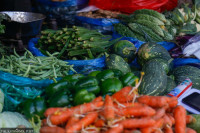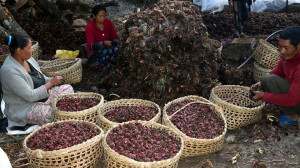Money
Gulmi turns the tide on sugarcane farming
A cooperative has revived the crop with modern tools, but Tarai farmers still face delayed payments and low earnings.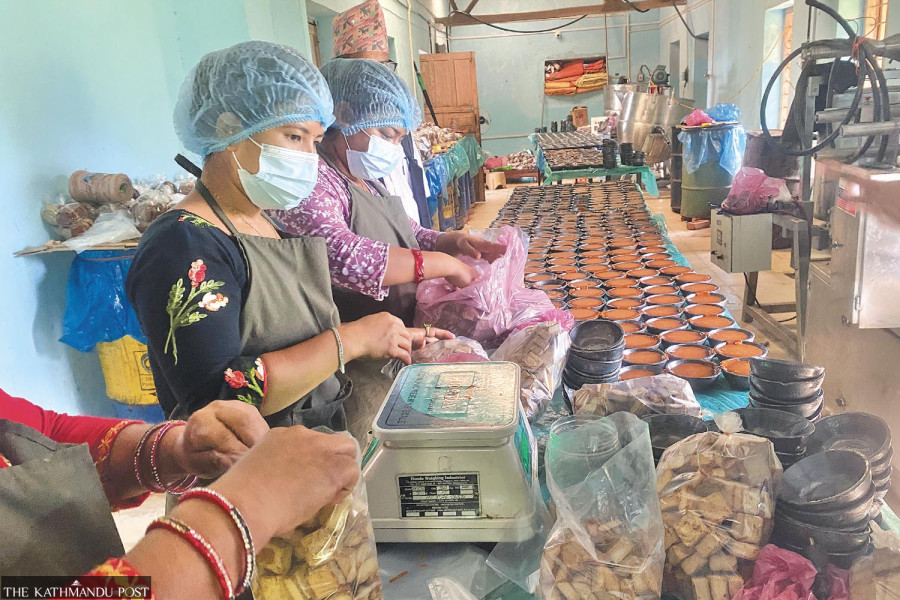
Sangam Prasain & Madhav Aryal
In the quiet hills of Gulmi’s Rurukshetra Rural Municipality lies Thorga, a village with a 150-year-old legacy of sugarcane cultivation. Here, Kamala Marasini tends to her five ropani (0.25 hectares) of sugarcane fields. This year alone, she earned Rs90,000 from her harvest—an impressive income given this region’s problematic history of sugarcane farming.
Sugarcane has long been embedded in Thorga’s soil and soul. But until recently, turning it into jaggery was an exhausting ordeal. With most men leaving for jobs abroad, the burden fell on women. They harvested the tall, fibrous stalks by hand, hauled them on their backs, and crushed them using oxen-powered mills.
The extracted juice was then boiled for hours in traditional ovens, or bhattis, fueled by firewood piles. Thick smoke billowed from these makeshift setups, enveloping the women in soot and heat as they toiled to produce blocks of jaggery—a process as physically draining as time-consuming.
The smoke would cling to their lungs and eyes. Jaggery, the sweet brown block made from sugarcane juice, required backbreaking effort—manually crushing the cane and cooking the juice over open wood fires for hours, even days.
“The workload was massive,” Kamala recalled. “We had to crush the cane manually, then with oxen rotating the wooden mills. The smoke from the wood-fired stoves made us sick.”
That began to change when the Shree Ruru Multipurpose Cooperative Limited, a local initiative, stepped in with a bold idea: modernise the age-old tradition.
With help from the local government and development partners, the cooperative established a jaggery processing plant in Thanpati.
For the first time in the village’s history, the sugarcane mills and cooking ovens were powered by machines, not muscle.
The transformation was dramatic. A mechanical crusher brought from Gujarat, India, for Rs1 million—with contributions from the rural municipality and Heifer Nepal—could extract in two hours what once took an entire day. A modern oven lined with firebricks reduces cooking time and the harmful smoke inhalation plaguing the older generation.
“Now, the process is faster, cleaner, and more profitable,” Kamala said. The same cooperative now buys sugarcane at Rs12 per kilogram, double what farmers were paid before. “The cooperative has organised us. We are finally seeing the fruits of our labour.”
Inside the processing unit, workers were seen wearing plastic caps and masks, carefully maintaining hygiene standards as they handled the freshly made jaggery. The sweet, golden blocks were neatly packaged into bags, each proudly stamped with its own brand name—Thorgeli Jaggery—a local identity the cooperative is determined to build and protect. The demand is growing.
The numbers tell the story.
Sugarcane farming in the rural municipality had shrunk drastically in the past. A decade ago, it was grown on just 800 ropani (40.69 hectares). Thanks to mechanisation and the cooperative’s work, that figure has rebounded to 3,200 ropani (162.8 hectares).
Jaggery production, once limited by manual labour and poor market access, has now scaled up. The cooperative produces round blocks of jaggery sold at Rs260 per kilogram and even makes sugarcane candy. Farmers no longer have to haul their produce to traders or neighbouring villages. The cooperative collects it directly from their homes using tractors.
Farmer Ghanshyam Darlami Magar is among the many who have expanded cultivation. “I started with two ropani. I grew sugarcane on four ropani this year and earned Rs72,000,” he said. Previously, due to a lack of proper equipment, farmers like him sold their harvests to traders in Digam or nearby rural municipalities at low prices. Today, the cooperative has flipped that script.
It is not just Kamala and Ghanshyam who are benefiting. The cooperative supports 110 registered members and serves around 400 farmers, including non-members. Thorga, Thanpati, Darsingbas, Chautara, Bhatkuwa, and Chyurek—villages spread across wards 1, 3, and 4 of Rurukshetra—have become fertile grounds not only for sugarcane but also for a quiet economic revolution.
The Thorgeli Jaggery factory, operated by the cooperative, is at the heart of this transformation. The small facility employs eight people, including Manager Prakash Thapa, who is hands-on with daily operations. “The cooperative brought structure and stability to sugarcane farming,” he said. “Now we’re working to make farmers entrepreneurs and to brand Thorga’s jaggery as a distinct product.”
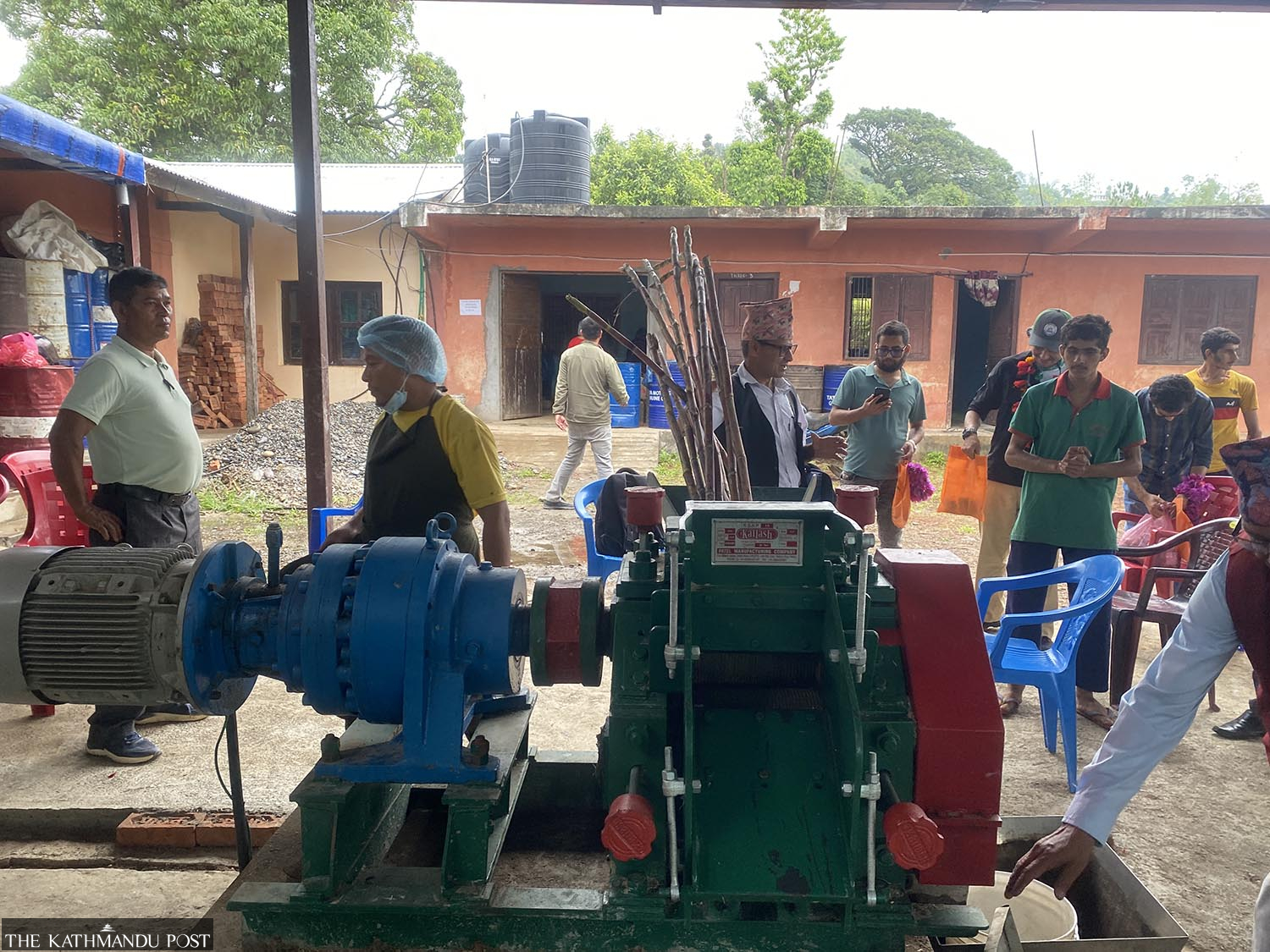
The government has taken notice. The rural municipality has handed over the building of the former Janapriya School to house the jaggery unit. It has also invested Rs5.5 million, disbursed in two instalments, to build critical infrastructure. Plans are underway to offer subsidies on fertilisers and seeds, and to strengthen market linkages so that Thorga’s jaggery can find buyers across Nepal.
In contrast to the quiet revival seen in Thorga, sugarcane farming in Nepal’s southern plains continues to be marred by distrust and frustration. For years, farmers there have battled not just the weather and pests, but the very mills meant to buy their produce. Many of these mills have repeatedly delayed payments, sometimes for years, pushing growers to the brink.
A few years ago, sugarcane farmers from districts like Sarlahi picketed Singha Durbar—the seat of the country's administration—and staged strikes at Maitighar, demanding payment of their long-overdue dues. The protests have turned tragic. In 2020, Narayan Raya Yadav, a sugarcane farmer from Sarlahi, died of a heart attack while in Kathmandu to join the agitation. Two years earlier, in 2018, farmers had resorted to a fast-unto-death campaign to press the same demands.
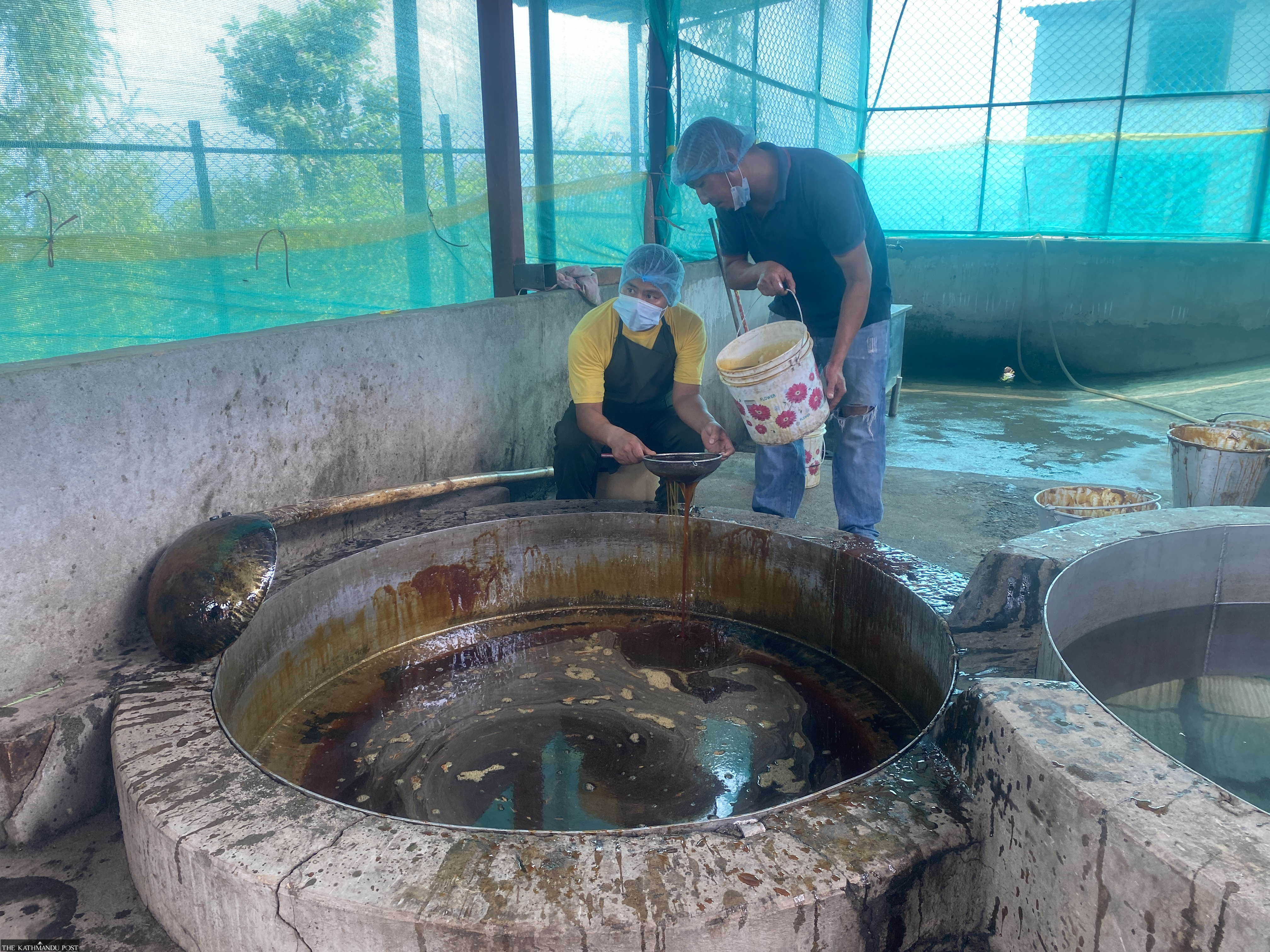
Sugarcane has long been considered an industrial crop in the Tarai belt, but it has become a bitter crop for those who grow it. Successive governments have struggled to regulate the sector. Only in 2018 did the government begin fixing sugarcane’s minimum support price (MSP). Until then, the rates paid to Nepali farmers were often arbitrarily tied to the prices Indian mills offered across the border.
Even today, government-fixed rates are far from attractive. With rising input costs and poor enforcement of purchase commitments, many farmers in the southern plains are giving up on sugarcane altogether and switching to other, more profitable crops.
In Rurukshetra, farmers are paid swiftly. “We pay within a month. There is no issue of payment and market,” said Bheshraj Gyawali, the cooperative chairman.
In the current fiscal year alone, the cooperative procured and crushed 270 tonnes of sugarcane worth Rs3.2 million. Their jaggery and candy sales are expected to hit Rs7 million. Next year, the target is even higher: crush 350 tonnes and deepen the footprint of Thorgeli products across the region.
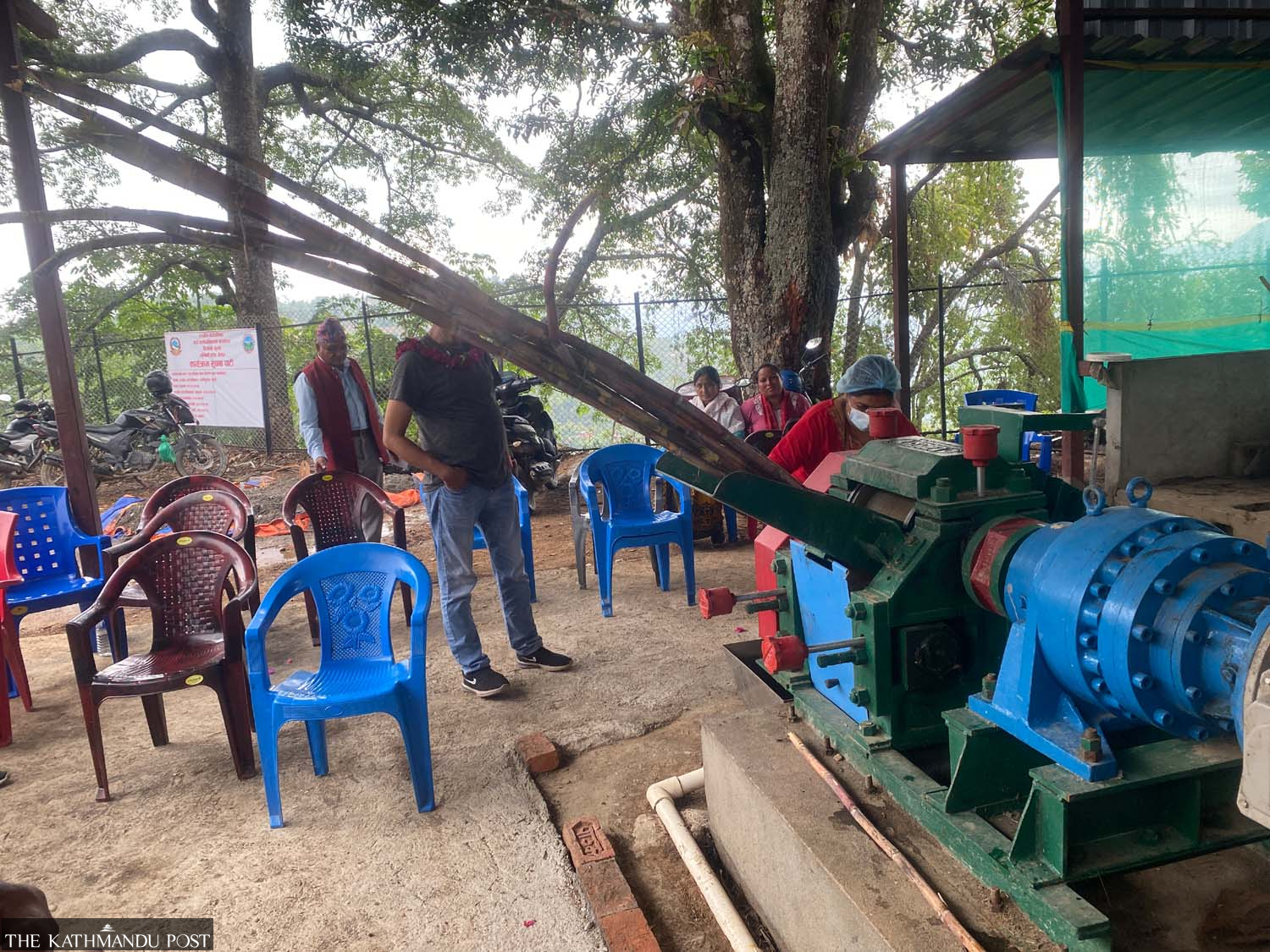
The Heifer Project Nepal has been a key partner, providing Rs7.5 million to date in machinery procurement and market development support. The Agricultural Knowledge Centre in Gulmi has added another Rs300,000 for seed distribution and farming promotion. With these combined efforts, the cooperative is preparing for the future.
One key reason the jaggery from Thorga is gaining traction is improved connectivity. The completion of the Kaligandaki Corridor—linking the Siddhartha and East-West highways—has made it easier to transport jaggery and sugarcane-based products to markets like Butwal, Narayanghat, Pokhara, and beyond.
Farmers who once watched their heritage crop fade into memory now see a viable future in the hills. The revival hasn’t just sweetened incomes—it has given villagers a renewed sense of identity. The fusion of tradition and technology, supported by collective action, has created a model that other rural economies could learn from.
And Kamala? She is already planning next season’s harvest, with even more land under cultivation.
“We stuck with sugarcane through the tough times,” she said. “Now it’s finally rewarding us.”




 6.1°C Kathmandu
6.1°C Kathmandu




